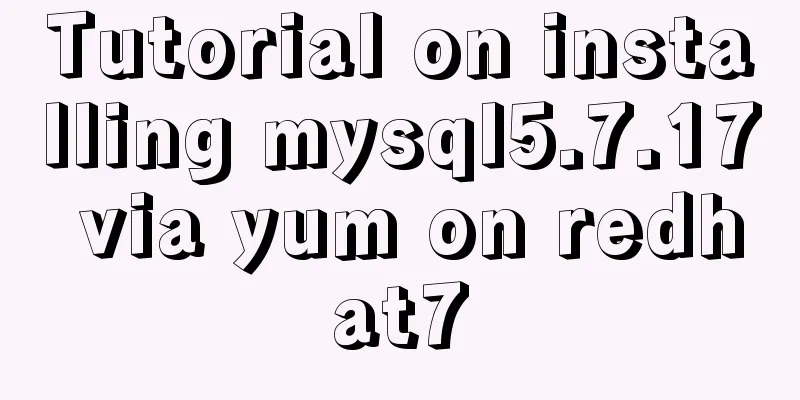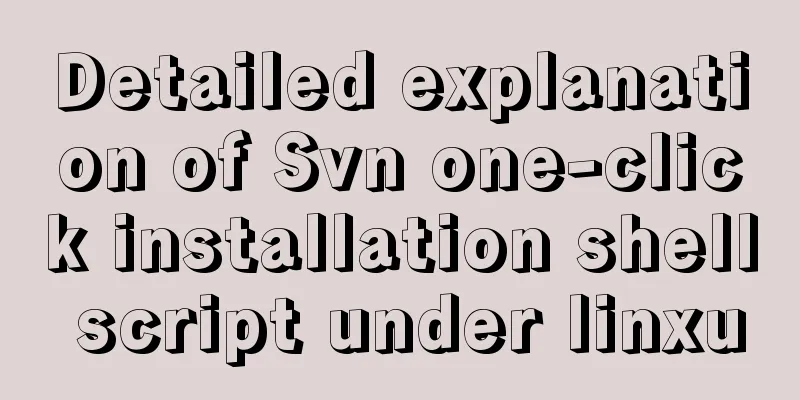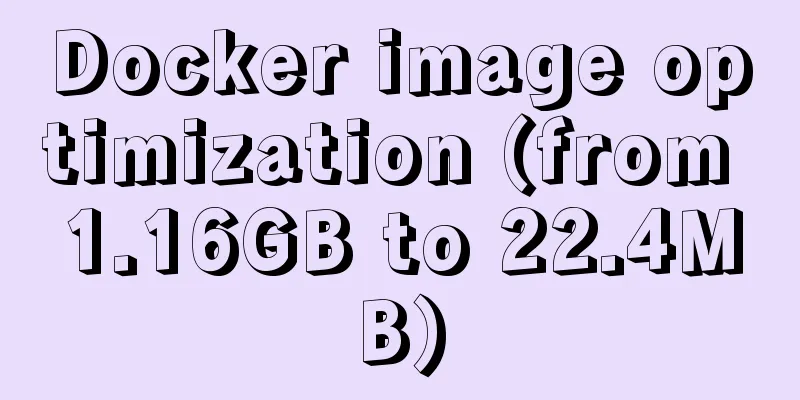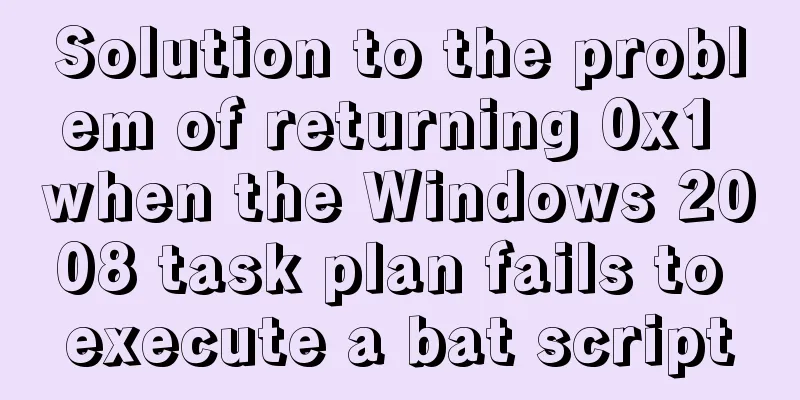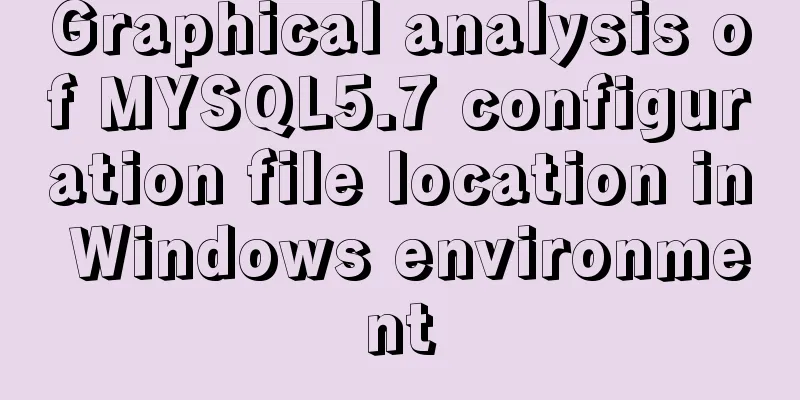Implement dynamic management and monitoring of docker containers based on spring-boot and docker-java [with complete source code download]
![Implement dynamic management and monitoring of docker containers based on spring-boot and docker-java [with complete source code download]](/upload/images/67cae81f704b7.webp)
|
Introduction to Docker Docker is an open source application container engine. Compared with traditional virtual machine technology, Docker container has extremely low performance overhead, so it is also widely loved by developers. As more and more developers base their work on Docker, Docker images are becoming more and more abundant. In the future, various complete enterprise-level solutions can be used directly by downloading images. Therefore Docker becomes more and more important. Purpose of this article This article uses a project example to introduce how to manage and monitor Docker containers through the Docker external interface. Application scenarios: The server resource pool is managed uniformly through Docker, resources are allocated and containers are created on demand to maximize resource utilization. At the same time, the isolation between various businesses (containers) is ensured. And it can support online deployment of projects. This project simulates the above scenarios. The code is not strictly prohibited and is for learning only. This article 1. Create a docker tomcat container through the interface and configure the limit. 2. Upload the war package and deploy it to the container. 3. Dynamically monitor the resource usage of all Docker containers. The code is based on the docker-java open source component and the functional development is completed based on spring-boot. The interface is as follows:
Basic Environment 1. eclipse 2019-03; 2. Docker for Windows. For the purpose of learning and simplicity, the Linux environment is not used, but the principles and basic commands are the same. Related technologies and knowledge points: maven, spring-boot; spring mvc; spring upload and download, jquery ajax and upload. Implementation principle Docker provides a variety of external interfaces (such as restfull API), through which Docker can be managed. The docker-java open source component is encapsulated based on this interface, making development easier. Of course, there are other packaged components on the market, and you can compare and learn by yourself. I would like to express my gratitude to the open source authors here. Preparation before implementation 1. Upgrade Windows Since we are using a Windows environment, my own computer is pre-installed with Win10 Home Edition, and Docker for Windows needs to run on a higher-level operating system to use virtualization technology, so it needs to be upgraded to the Professional Edition. If you need to upgrade, the upgrade process is relatively simple, as briefly described below (you can skip this if you already have the professional version):
Click Change Product Key, enter the professional version key, and then wait for the upgrade to proceed. You can look for the key on the Internet yourself, it is there anyway. 2. Install Docker for Windows After downloading from the official website, just click on the next step. After installation, it will start automatically, and the docker logo will appear on the toolbar after startup.
After the installation is successful, you can type some commands to test whether it is successful. For example: view the basic information of Docker.
3. Modify the docker image address. Since the default mirror address is slow, a tomcat mirror is more than 500m, and the download will be very slow if the network is not good, you can configure the mirror address to the NetEase mirror address as follows:
4. Start remote management Check the last item, the tcp//xxx here is the remote connection address.
After starting, type the address in the browser to see if it returns any results: http://localhost:2375/info (this address is the same as entering docker indo in cmd) returns the content in json format:
Code development during implementation 1. Create a Maven project. Due to the simplicity of the process, this process is omitted. The code structure of the entire project is as follows:
2. Configure the Maven dependencies of docker-java and spring boot. The final pom file content is as follows
By looking at the jar package, docker-java should use netty dependency at the bottom layer. 3. Add the spring configuration file application.properties Configure the location of jsp and the management address of docker.
4. Introduction to main categories: 1. Spring boot starts the main class. Of course, you can also configure other containers or use Maven's jetty plugin to start it. You can refer to another article: Spring-boot principle (with a spring-boot-starter example) with source code download
Pay attention to the location of this class. It is best to put it in the root directory so that all subdirectories under the root directory can be scanned by Spring. 2.DockerClientOperaterServer (class that interacts with docker), as follows: The following methods are included: initClient: Initialize the connection. getDockerInfo: Get basic information about Docker; stat: real-time statistics; refreshContainers: Gets basic information of all containers and puts it into cache; createAndStartrContainerAnddeployApp: creates and starts a container based on the parameters passed in the interface, and deploys the project at the same time; stopContainer: Stop the container; rmContainer: delete a container; closeClient: close the connection; pushAppToCotainer: deploy war package to tomcat; Since the code snippet is too long, here are a few main methods:
createContainer (create container): This method uses docker-java to create containers, allocate quotas, configure port mapping, etc. pushAppToCotainer: deploy the project to tomcat
stat, monitoring method: The docker-java method is not used for monitoring. In fact, it is supported, but because the returned results require various processing, a shortcut method is used. Use java to call cmd to execute (docker stats) to obtain monitoring results.
The code for docker-java to obtain monitoring information is as follows:
3.DockerClientController (controller that interacts with the interface). Main methods introduction: addContainer: add container and upload war package
The above is the explanation of the main code. For specific code details, please download the source code and start it and follow the process to view it. The main interface after implementation: Since this is a sample project, the code does not use any Vue and Bootstrap frameworks. I wrote some css and js myself. The specific effects are as follows: 1. Monitoring and management homepage
2. Add container;
Summarize The above is what I introduced to you about the dynamic management and monitoring functions of docker containers based on spring-boot and docker-java [with complete source code download]. I hope it will be helpful to you. If you have any questions, please leave me a message and I will reply to you in time. I would also like to thank everyone for their support of the 123WORDPRESS.COM website! If you find this article helpful, please feel free to reprint it and please indicate the source. Thank you! You may also be interested in:
|
<<: Installation steps of mysql under linux
>>: How to explain TypeScript generics in a simple way
Recommend
The simplest MySQL data backup and restore tutorial in history (Part 2) (Part 37)
Data backup and restore part 3, details are as fo...
The first step in getting started with MySQL database is to create a table
Create a database Right click - Create a new data...
Detailed steps for installing JDK and Tomcat on Linux cloud server (recommended)
Download and install JDK Step 1: First download t...
About the layout method of content overflow in table
What is content overflow? In fact, when there is ...
Complete steps for Nginx proxy front-end and back-end separation projects with the same domain name
The front-end and back-end projects are separated...
Detailed explanation of using split command to split Linux files
A few simple Linux commands let you split and rea...
Navicat imports csv data into mysql
This article shares with you how to use Navicat t...
Detailed tutorial on running selenium+chromedriver on the server
1. Introduction I want to use selenium to scrape ...
A brief discussion on the implementation of MySQL's limit paging optimization solution
Mysql limit paging statement usage Compared with ...
What are inline elements and block elements?
1. Inline elements only occupy the width of the co...
Implementation steps for installing java environment in docker
This article is based on Linux centos8 to install...
Baota Linux panel command list
Table of contents Install Pagoda Management Pagod...
How to write a MySQL backup script
Preface: The importance of database backup is sel...
The pitfall of MySQL numeric type auto-increment
When designing table structures, numeric types ar...
How to implement an array lazy evaluation library in JavaScript
Table of contents Overview How to achieve it Spec...



















